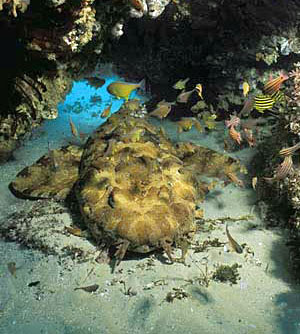Size Matters!
Rearrange the list of sharks in order from the biggest to the very smallest.
 |
| Adult Whale Sharks, like this one, can be 45 feet (about 14 meters) long. |
Start by looking at the photos and reading the text. For even more clues, check out the map on page 30.
Swell Shark
Cookie-Cutter Shark
Whale Shark
Basking Shark
Port Jackson Horned Shark
Thresher Shark
Ornate Wobbegong Shark
Longnose Sawshark
Spined Pygmy Shark
Great White Shark
Would You Believe?
Can shark skin be used as sandpaper?
Can shark skin be used as sandpaper?
 |
| Like your teeth and a shark's teeth, denticles have a soft center pulp and a hard enamel coat. |
Read pages 12 and 13 to discover a shark's body is covered with little parts called denticles. Search on Google to find out if anyone ever used shark skin for sandpaper in the past.
Check out this Myth Busters episode to see a test to find out if shark skin will work as sandpaper.
Thanks to all its denticles, this Swell Shark looks like a rough character. You might be surprised to learn the denticles do more than act like a suit of armor. The shape helps a shark slip move more easily through the water. Sharks also regularly shed and replace denticles just the way they do the teeth in their jaws. As they grow bigger, some kinds of sharks add more little denticles to cover their body. Others replace smaller denticles with larger ones.
A Shark Gave Me The Idea
There are lots of special things about sharks. Check out the follow list. Then think of something you might invent for people to use based on something special about sharks. |
| See the nictitating membrane partly covering this blue shark's eye. |
- Some sharks have a special eye membrane, called a nictitating membrane. When the shark gets close to something, such as its prey, this moves over the eye to shield it. Great Whites have a set of muscles that roll the entire eye into its socket to protect it.
- A shark's nostrils are on the outside of its body and lead into nasal sacs. These aren't for breathing--only smelling. The sacs are made up of lots of folds of tissues, all packed with scent sensors. No wonder a shark can detect as little as five drops of blood mixed into the amount of water it takes to fill an average swimming pool.
 |
| These spiracles are on a zebra shark. |
- What look like freckles on some sharks are the openings of special electricity sensors. These let the shark detect tiny charges produced by a prey's heartbeats or muscle movements. This lets the shark be particularly sensitive to wounded animals, the easiest prey to catch.
- A shark can move its upper jaw forward and out to bite. You can only move your lower jaw.
- A shark's skeleton is entirely cartilage, the rubbery kind of supporting structure you have in your external ear. That helps sharks in a number of ways. Cartilage is lighter than bone, which helps sharks stay afloat. It's also more flexible than bone, letting sharks make really tight turns.
Shark Tale
Pick one of the sharks you read about in SHARKS: BIGGEST! LITTLEST!.
 |
| This Ornate Wobegong Shark ambushes its prey using fanglike teeth to snag its prey. |
Look Again!
The pictures in SHARKS: BIGGEST! LITTLEST! have their own stories to tell. Take another look at the pictures in the book to answer these questions.
 |
| Cookie Cutter Shark takes a bite on pages 10 and 11. |
Do Cooke-Cutter Sharks have lower teeth that are different sizes and shapes or are they all the same size?
Are sharks as big today as during prehistoric times? How do you know?
Which sharks that appear in the book have their mouths at the front end of their head? Which have their mouths under a nose?
Sharks For Good Measure
Now, find at least 3 things about the same length as a Great White Shark. What are they? Now find out how much longer or shorter each of the following things is compared to a Great White Shark.
- The class's two tallest students lying head to feet on the floor
- Your school's librarian
- The length of the school principal's car.
While you're measuring, here's some cool facts you'll enjoy learning about Great White Sharks:
Mother sharks give birth to as many as 60 babies at one time. The babies are on their own immediately after they're born.
Great White Sharks swim very fast compared to other sharks. They've been clocked swimming as fast as 40 miles per hour. But they can never stop swimming. They sink if they stop moving. Their bodies also aren't designed to let them swim backwards. So they can't backed up.
More Action
 |
| Read page 24 to learn more about this hatching baby Swell Shark. |
Visit the following websites to keep on investigating sharks.
- Shark Trust Activity Zone
- Monterey Bay Aquarium Activities
- Discovery Channel Shark Week Games & Interactives


























































